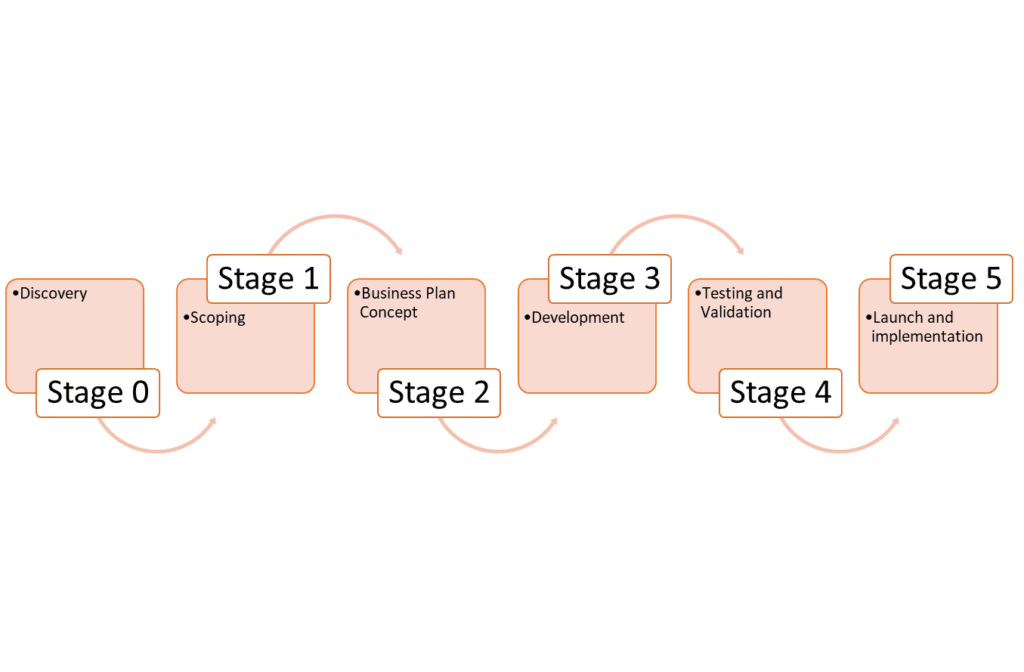Strategic Model in Product Development: In the ever-evolving landscape of product development, a well-defined strategy serves as a guiding compass, leading teams towards innovation, market relevance, and sustainable growth. Strategic models play a pivotal role in shaping the trajectory of product development endeavors, ensuring that resources are optimized and efforts aligned with overarching business goals. In this article, we delve into some prominent strategic models that empower organizations to navigate the complexities of product development with precision and purpose.


Strategic Model in Product Development
Table of Contents
1. The Ansoff Matrix: Expanding Horizons


Strategic Model in Product Development: The Ansoff Matrix, developed by Igor Ansoff, offers a structured framework for growth strategy. It presents four strategic directions – Market Penetration, Market Development, Product Development, and Diversification – each addressing a distinct avenue for expansion.
- Market Penetration: Focused on existing products in existing markets, this approach aims to increase market share through strategies like aggressive marketing, pricing adjustments, and customer loyalty programs.
- Market Development: This approach explores new markets for existing products, often involving geographical expansion or tapping into different customer segments.
- Product Development: Key for product-centric companies, this strategy involves creating and launching new products within existing markets, catering to evolving customer needs.
- Diversification: This high-risk strategy involves introducing new products in new markets, requiring careful analysis and risk assessment.
2. The Blue Ocean Strategy: Creating Uncontested Market Space


Strategic Model in Product Development: Coined by W. Chan Kim and Renée Mauborgne, the Blue Ocean Strategy advocates for finding uncontested market space, differentiating from competitors, and creating new demand. Instead of competing in crowded “red ocean” markets, this model encourages innovating to create unique value propositions that cater to previously unaddressed customer needs.
For instance, a company that combined smartphone capabilities with affordable medical diagnostics created a “blue ocean” by offering accessible healthcare solutions to underserved populations.
3. The Innovation Ambition Matrix: Balancing Risk and Reward


Strategic Model in Product Development: Innovation is a cornerstone of successful product development. The Innovation Ambition Matrix, introduced by McKinsey, categorizes innovation efforts into four quadrants:
- Core Innovations: Incremental improvements to existing products or processes, minimizing risk while delivering steady value.
- Adjacent Innovations: Introducing innovations to related markets or customer segments, slightly riskier but offering growth potential.
- Transformational Innovations: More radical changes that transform existing products or create new ones, involving higher risk but substantial rewards.
- Disruptive Innovations: High-risk, high-reward ventures that create new markets and fundamentally alter industries.
4. The Stage-Gate Model: Structured Progression


Strategic Model in Product Development: The Stage-Gate Model, developed by Robert G. Cooper, divides the product development process into distinct stages or gates. At each gate, a cross-functional team assesses the project’s progress, potential, and alignment with business objectives. This model enhances project transparency, minimizes risks, and allows for informed decision-making.
5. The Lean Startup Model: Iterative Learning


Strategic Model in Product Development: Rooted in lean manufacturing principles, the Lean Startup Model, popularized by Eric Ries, emphasizes rapid experimentation and iterative learning. It encourages building a minimum viable product (MVP) to test hypotheses, gather feedback, and refine the product in response to real-world insights.
6. The Technology Adoption Lifecycle: Targeting Early Adopters


Strategic Model in Product Development: Everett Rogers’ Technology Adoption Lifecycle identifies various customer segments based on their willingness to adopt new technologies:
- Innovators: Embrace new products and technologies eagerly, often seeking novel solutions.
- Early Adopters: Opinion leaders who influence others, willing to take calculated risks for innovation.
- Early Majority: Pragmatic customers who adopt after seeing successful implementations by the early adopters.
- Late Majority: Skeptical but eventually adopt products as they become mainstream.
- Laggards: Highly resistant to change and often hesitant to adopt new technologies.
By understanding these segments, companies can tailor their product development and marketing strategies accordingly.
Strategic Model in Product Development: Conclusion
Strategic models in product development provide structured approaches to drive growth, innovation, and customer satisfaction. Companies can draw from these models, adapting and combining them to fit their unique contexts. The key lies in aligning strategy with organizational goals, customer preferences, and market dynamics. By carefully charting the course using these models, organizations can navigate the intricate landscape of product development with confidence and purpose, ultimately achieving success in a competitive business landscape.

